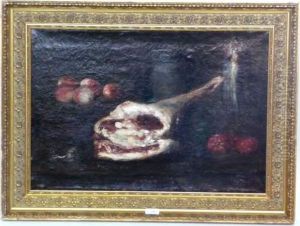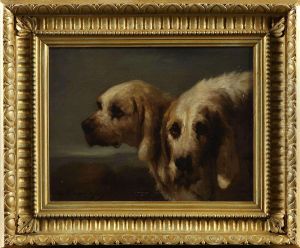Jules Chardigny Paintings
Jules Chardigny was a 19th-century French sculptor born in 1839 in Besançon, France. He was known for his dedication to naturalism in sculpture, a style that was gaining popularity during his lifetime. Chardigny's work reflected a keen observation of the human form and an interest in portraying subjects with realism and emotional depth.
Chardigny was trained in the Beaux-Arts tradition, a system of art education that emphasized classical forms and techniques. He studied under renowned French sculptor François Jouffroy, who was known for his classical style and influence on the academic art world of France. Under Jouffroy's mentorship, Chardigny honed his skills and developed an appreciation for the nuanced depiction of the human figure.
Despite his promising career, Chardigny's life was cut short when he died at the young age of 30 in 1869. His early death meant that his body of work was limited, and he did not have the opportunity to fully develop his artistic legacy or influence the art world to the extent that his contemporaries did. Nonetheless, Chardigny's sculptures remain a testament to his talent and the artistic currents of his time.
Chardigny's works are characterized by a delicate treatment of surfaces and a subtle rendering of expressions and anatomy. He often worked in marble and bronze, the former being the medium of choice for many Beaux-Arts sculptors due to its association with classical antiquity and its ability to capture fine detail. Although he did not live long enough to see the full evolution of naturalism and realism in art, his sculptures contributed to the movement's progression by challenging the more rigid and idealized forms that had previously dominated French sculpture.
Today, Chardigny's works can be found in museums and collections that focus on 19th-century French art. His contributions to sculpture are recognized as part of the broader narrative of art history during a period of transition from neoclassicism towards more realistic representations. While not as widely known as some of his peers, Chardigny's work continues to be appreciated for its craftsmanship and the insight it provides into the artistic trends of his era.















